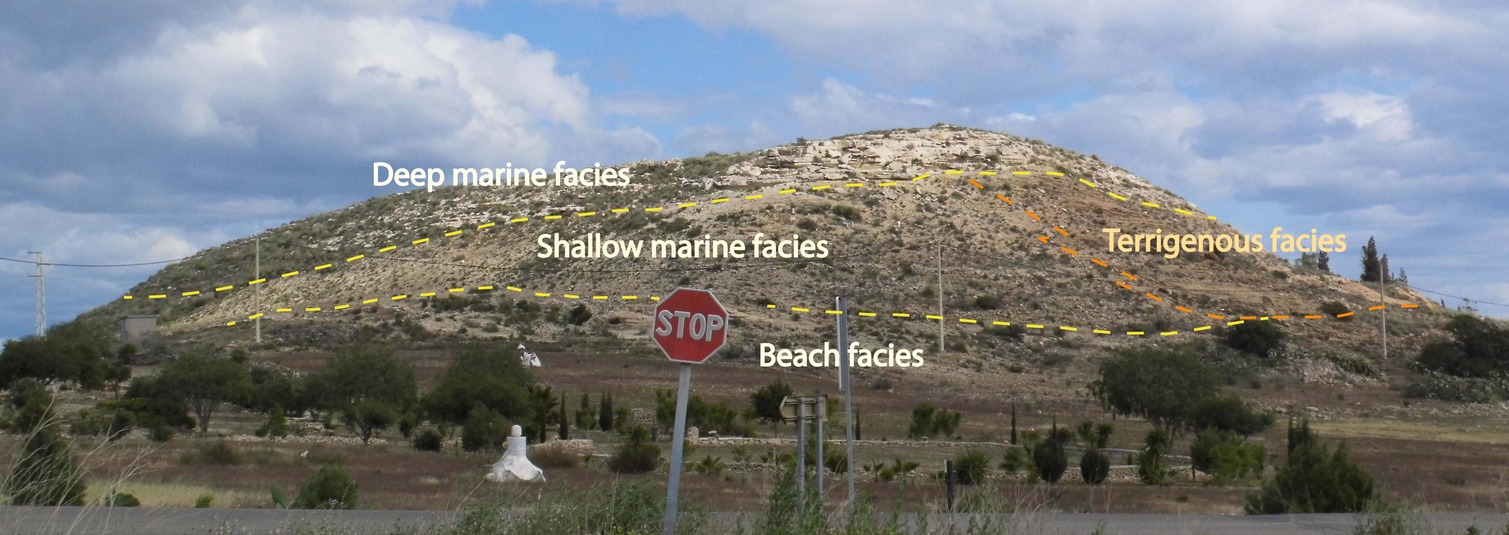Environmental Geology in Spain - On the surface and under water
20.02.2016
Newsfeed of the day
by Andrea Mazón
Photo credit: Katrin Kleemann
On the surface and under water
“Los Pacos” is a very special hill where one can observed different environments (≈ facies) that were present in this area millions of years ago. We discovered the following environments, from the bottom to the top:
Beach facies: light brown formation, composed by oolits (≈1 mm round organisms created by precipitation of concentric carbonate layer).
Shallow marine facies: gray-light brown formation, small sandstone packages (< 7 cm) with cross bedding, small isolated coral reefs.
Terrigenous facies: orange formation, coarse sandstone packages with big internal structures (> 7 cm).
Deep marine facies: beige formation, alternation of very fine silt and cemented sandstone with intern structures like ripples, parallel lamination, and tool marks (marks on rock surface, caused by impact of solid objects).
Los Pacos hill subdivided into facies. Facies indicate the environments where the sediments were deposited. The environments change in horizontal and vertical direction.
The characteristics of each facies determine the depositional environment of the sediments. Therefore, we see from the bottom to the top of the hill an increase of oceanic depth. This shows the environment changes though time at the same spot.
From whatever place you are reading this right now, ask yourself: What was at this exact same place before? Was it an ocean, a forest, a river or perhaps a desert? How amazing would it be to discover it!


